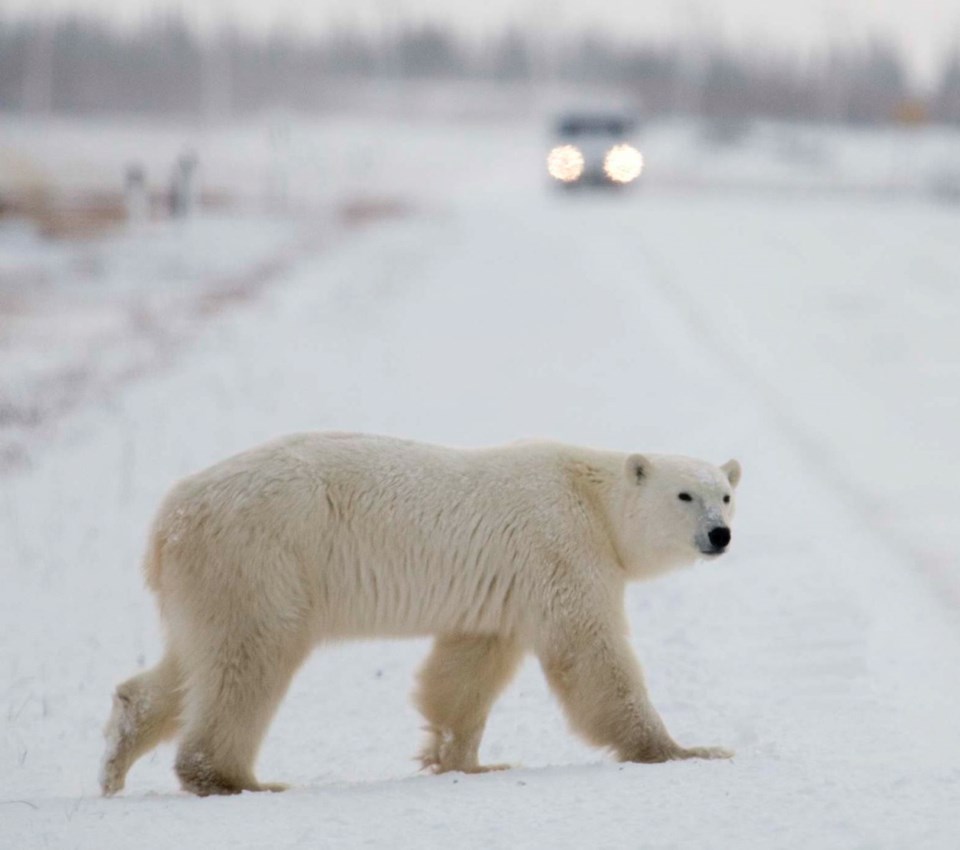The polar bear has become the poster child for climate change impacts in the Arctic. Sea ice, which the bears depend on for hunting, is melting at an ever-expanding rate.
For other species, climate impacts are not as direct. The 2019 State of sa���ʴ�ý’s Birds report found aerial insectivores such as swifts, swallows and nightjars have declined by 59 per cent since 1970. The report cites climate change as one of several threats, as severe weather limits insect availability.
Similarly, according to Lauren Meads, director of the Burrowing Owl Conservation Society of sa���ʴ�ý, extreme weather events linked to climate change have affected habitat where captive rehabilitated burrowing owls are released, affecting their ability to return to breeding grounds the following year.
For those working to help species recover, addressing the primary cause of decline is key. Although climate disruption is exacerbating the plight of many species, the polar bear and its Arctic neighbours stand (or swim or fly) alone to some extent. The primary cause of decline for most at-risk species in sa���ʴ�ý is habitat loss and degradation.
Some industries are trying to use the ever-evolving climate crisis to stall habitat protection and recovery. When the forestry industry called for a delay in much-needed recovery measures, citing the need to explore climate change impacts on caribou populations, some leading caribou scientists wrote: “There is little evidence to suggest that climate change brought caribou populations to their current threatened condition, nor does climate change explain the rapid rates of decline and range recession that are continuing today in many locations.”
Although they intersect, the ecological emergency driving species imperilment and the climate crisis can’t be entirely conflated. The extinction crisis is caused by a lack of sufficient limits to development, agricultural and resource-extraction activities. The climate crisis is cause by a lack of sufficient limits to greenhouse gases we release into the atmosphere.
That isn’t to say that there isn’t significant overlap, in causes and solutions.
A Canadian Parks and Wilderness Society report says: “Human activity, including industrial farming, logging, mining, hydroelectric development, and oil and gas exploration, have caused these twin ecological crises, which are closely interrelated.” Finding Common Ground finds: “Reducing human-driven land use change in sa���ʴ�ý’s ecosystems, especially wetlands, offers a potential treasure trove of emission reductions with significant biodiversity benefits.”
This is especially true in Alberta and northeastern sa���ʴ�ý, where oil and gas development have devastated caribou habitat and imperilled wildlife and the Indigenous communities that depend on it. Industrial activity has disturbed 96 per cent of the Little Smoky caribou range and 70 to 80 per cent of the Chinchaga, West Side Athabasca River, East Side Athabasca River, Cold Lake, Nipisi and Slave Lake boreal caribou ranges.
These high disturbance levels reduce caribou populations’ chances of persistence to less than 20 per cent. To increase their chances, significant changes are needed to contain the logging and oil-and-gas footprint and initiate aggressive restoration.
Protecting habitat such as the boreal forest, rich with peatlands, would also serve as a means of sequestering carbon.
Wildlife decline isn’t just an ecological issue. In sa���ʴ�ý’s Peace River Valley, more than three-quarters of Blueberry River First Nations traditional territory is within a few minutes’ walk of industrial disturbance. In May 2019, Blueberry took the province to court, arguing that the cumulative impacts of industrial activities — primarily oil and gas — have significantly affected the lands and wildlife within their traditional territory and, accordingly, their treaty rights to hunt and fish.
Although there are different ways to mend and mitigate the two crises, the root causes — avoiding our duties to repair what we have fractured, neglecting to set limits to human activities, stalling direly needed actions — are the same, as are the broad solutions: recognizing our impacts on the planet, taking responsibility for them and coming together to take immediate, meaningful action. As the CPAWS report says, protecting and restoring forests, peatlands, grasslands and wetlands can advance biodiversity and climate goals.
As daunting as both crises are, we can’t look away. We must face them and change course.
All living things depend on a stable climate and functioning ecosystems. Our planet is the only one with badgers and dragonflies — and chocolate! It’s worth fighting for.
David Suzuki is a scientist, broadcaster, author and co-founder of the David Suzuki Foundation.



